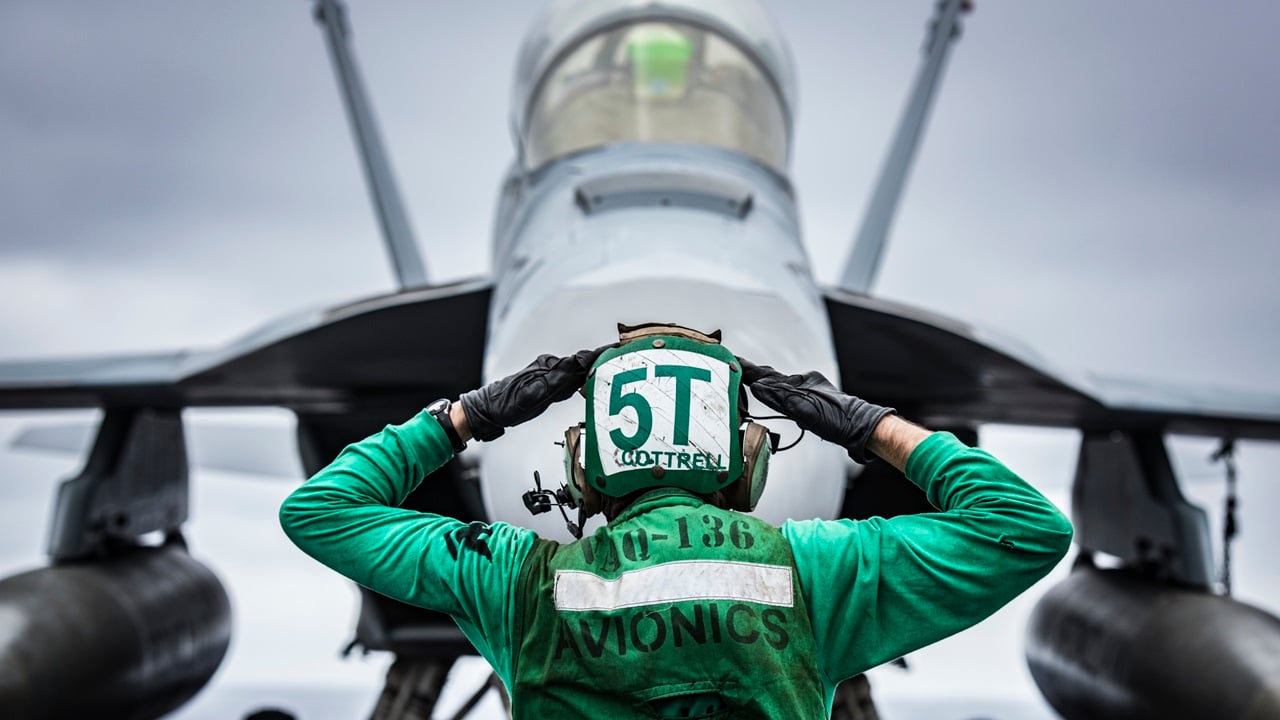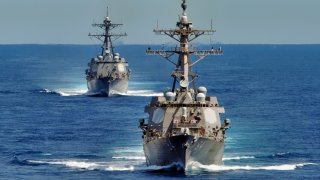America’s Enemies Have More Missiles Than U.S. Navy Warships Can Stop
The U.S. Navy faces a growing threat from anti-ship ballistic missiles (ASBMs) deployed by adversaries like China. These missiles, combined with swarm tactics, could overwhelm U.S. naval defenses, especially as the Navy remains overstretched with deployments primarily focused on the Middle East.
Summary and Key Points: The U.S. Navy faces a growing threat from anti-ship ballistic missiles (ASBMs) deployed by adversaries like China. These missiles, combined with swarm tactics, could overwhelm U.S. naval defenses, especially as the Navy remains overstretched with deployments primarily focused on the Middle East.
-The comparison to Israel's Iron Dome highlights how even advanced defense systems can be overwhelmed by sheer numbers. The current situation in the Red Sea, where the U.S. Navy is cautious due to Houthi missile capabilities, serves as a warning of the more significant threat posed by China.
-The Navy must urgently reconsider its strategies to avoid being outmatched by the mathematics of missile swarms.
Why China's Missile Swarms Could Overwhelm the U.S. Navy
Among the 37 members of the Organization for Economic Cooperation and Development (OECD), the United States ranks 22nd in overall math achievement. And it’s been that way for years. So, it shouldn’t surprise anyone that the Americans apparently cannot figure out how the anti-ship ballistic missile arsenals belonging to multiple enemies can negate whatever apparent advantages the U.S. Navy’s surface fleet has over these rivals.
As military expert Harry Kazianis observed way back in 2013, when the anti-ship ballistic missile threat that America’s enemies posed to the Navy’s surface fleet was a fraction of what they pose today, “Think about it—could we someday see a scenario where American forces at sea with a fixed amount of defensive countermeasures facing an enemy with large numbers of cruise and ballistic weapons that have the potential to simply overwhelm them? Could a potential adversary fire off older weapons that are not as accurate, causing a defensive response that exhausts all available missile interceptors so more advanced weapons with better accuracy can deliver the crushing blow?”
The U.S. Navy Should Worry: Understanding Swarming Tactics and Missiles
Indeed, these are the questions that have pervaded discussions about the efficacy of Israel’s Iron Dome system. While Iron Dome is a truly game-changing system, it is not perfect.
Between Hezbollah, Hamas, the Houthis, and the Islamic Revolutionary Guards Corps, Tehran could have more than enough missiles arrayed against Israel’s Iron Dome to simply overwhelm it. According to some reports, the ammunition used by Israel is running low.
Now apply these discussions to anti-ship ballistic missiles. The same logic applies. An American warship operating within range of these anti-ship missiles could be left unable to adequately defend itself against fusillade after fusillade.

Math always wins. America’s enemies have figured this out. China doesn’t need to match the U.S. Navy ship-for-ship. Indeed, that would be a waste of precious resources. Instead, China can seek to draw the U.S. Navy into a fight near its own anti-ship systems and U.S. warships with missile swarms.
The Navy, meanwhile, has become fixated on deterring an Iranian strike on Israel. It has deployed the bulk of its forces to the Greater Middle East. Although, but it is keeping a paltry two destroyers near the Red Sea.
The Houthis Set an Example for China
Interestingly, the Red Sea is the only waterway in the Middle East that has active hostilities occurring. And those hostilities are being waged by a rag-tag band of Houthi Rebels. So, one could be forgiven for being confused as to why the mighty U.S. Navy would be keeping its distance.
It's because, as David Goldman has asserted, “The Houthis are China’s missile testing agency.” That’s the key to understanding not only why the Navy is giving the Red Sea a wide berth, but why there has been so much consternation about China’s far more advanced A2/AD capabilities. If the Houthis can threaten US Navy surface warships, including aircraft carriers, then just how much worse is the Chinese anti-ship missile threat?
The answer can be found in logic and math. Hopefully American policymakers relearn these skills before U.S. sailors pay the ultimate price for such foolishness.
Author Experience and Expertise: Brandon J. Weichert
Brandon J. Weichert, a National Interest national security analyst, is a former Congressional staffer and geopolitical analyst who is a contributor at The Washington Times, the Asia Times, and The-Pipeline. He is the author of Winning Space: How America Remains a Superpower, Biohacked: China’s Race to Control Life, and The Shadow War: Iran’s Quest for Supremacy. His next book, A Disaster of Our Own Making: How the West Lost Ukraine, is due October 22 from Encounter Books. Weichert can be followed via Twitter @WeTheBrandon.
All images are from Creative Commons and/or Shutterstock.
From the Vault
Russia Freaked Out: Why the U.S. Navy 'Unretired' the Iowa-Class Battleships
Battleship vs. Battlecruiser: Iowa-Class vs. Russia's Kirov-Class (Who Wins?)


